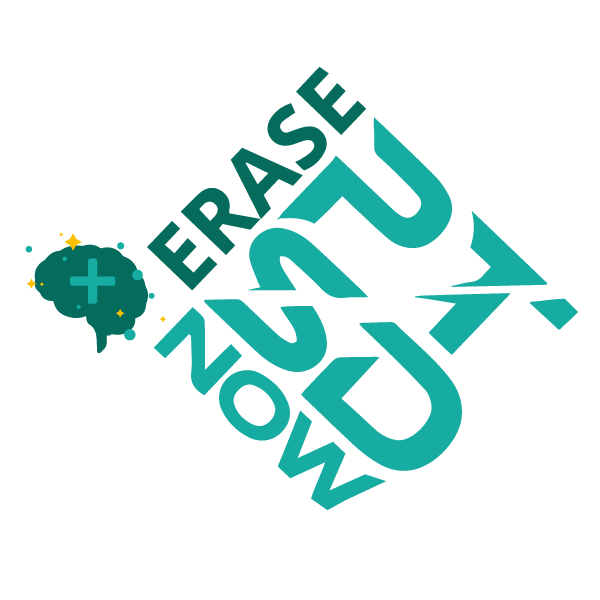
FREQUENTLY ASKED QUESTIONS
DONOR FAQ:
-
Erase PTSD Now, is a registered 501(c)3 and uses its donated funds to provide funding for SGB Procedures, fund Research Initiatives and run Mental Health Awareness Campaigns.
-
It costs on average $2500 for the dual sympathetic reset. Pricing varies at our different preferred provider locations.
-
Your donation covers the left and right SGB also known as dual sympathetic reset.
-
We do not share personal information and do not require details about one’s trauma as retelling can be re-traumatizing. Knowing someone needs treatment is enough for us.
APPLICANT FAQ:
-
Unfortunately, no.
Our preferred providers are vetted in collaboration with our Board, Executive Staff and the innovator of SGB for PTSD himself, Dr. Eugene Lipov.
Erase PTSD Now is a registered 501(c)3 and evaluates our preferred providers through a rigorous process where we look not only into a provider's outcomes but their compassion, processes, professionalism and medical training. Dr. Eugene Lipov, the innovator behind SGB or PTSD and our Medical Advisor helps to narrow down the search while our Board and Executive Staff evaluate the merit of adding the new providers to our list.
At this time, March 2024, our current providers are STELLA CENTERS + HUDSON HEALTH. You can find out more about them on our website here.
Erase PTSD Now meets once a year (365 days) to review the established preferred providers and add more. We do not offer the ability for approved applicants to find their own providers and ask Erase PTSD Now to cover their treatment at those locations. For our international survivors, we understand that means traveling to one of the preferred providers locations.
-
All applicants are asked to release Erase PTSD Now of responsibility pertaining to the medical procedure. Below is a copy of the agreement in the application. Applicants need to use other means to find resolution with the provider.
RELEASE OF RESPONSIBILITY STATEMENT
Applicant releases Erase PTSD Now from any and all responsibility for or liability from an applicant's treatment, which treatment is the sole responsibility of the preferred provider.
Erase PTSD Now, as a registered 501(c)3, simply provides funding for the procedure at a preferred provider. In turn, it is the responsibility of that provider to ensure that applicant receives proper treatment.
Applicant agrees that any recourse will be from preferred provider and applicant waives any and all claims of liability against Erase PTSD Now. -
The purpose of our SGB Scholarship program is to financially aid those who suffer with PTSD/PTSI to receive the Stellate Ganglion Block Injection through one of our preferred providers.
-
As a part of our funding for SGB Procedures, we have established an interested applicant process which includes a HIPAA certified survey where we ask healthcare related questions (so we can apply for more grant funding), inquire about general demographic data (age, location etc) and gauge financial need.
-
We use the financial need data to determine eligibility to receive nonprofit funds, not need for relief from PTSD or desire for the procedure. The financial need is determined by income to deficit in comparison to the 2021 poverty guidelines. We do ask for tax records, income, expenses and other financial estimates to help determine each applicant’s surplus and ability to cover the procedure on their own.
-
This scholarship program that funds the SGB Procedures COVERS the following:
· The first injection at one of our preferred providers locations
· Any pre or post care related to this injection procedure at the preferred provider location
-
· Travel, lodging, meals or transportation to or from the preferred providers location
· Ketamine Add-On treatments
· Treatment at providers offering SGB procedures outside of our preferred providers. You can learn more about them and their locations nationwide (USA) here.
-
That is a kinda complicated answer. So let’s dive in.
There is nothing that the applicant needs to or should do if a second treatment is needed as indicated by the medical staff. Our preferred providers will reach out to our internal Erase PTSD Now team directly if success and efficacy indicators are not met with your first treatment. This communication happens between offices ONLY.
WILL WE COVER THE SECOND TREATMENT COMPLETELY?
Erase PTSD Now ONLY covers a portion of the second treatment. You will work with the provider to sort out the rest.
BUT I STILL WANT ANOTHER TREATMENT? WHAT SHOULD I DO?
If you feel like you would like another treatment and you have NOT been referred by your patient care coordinator, you are always welcome to fund the treatment on your own or apply for a second treatment one calendar year (365 days) after treatment.
-
If approved for scholarship, an applicant will receive an email within a day of completing the application in full, letting them know of Erase PTSD Now’s evaluation of their application. It will include what to do while waiting for their number to come up on the waitlist for treatment.
Applicants who are approved and treated are allowed to reapply for another injection, 1 year (365 days) AFTER the procedure date of their first injection. This is due to the overwhelming need and those already on our waitlist. With limited funding and as a nonprofit organization, there are only so many applicants we can fund per month.
-
If not approved for a scholarship, the applicant will receive an email within a day of completing the application in full, letting them know of their standing with Erase PTSD Now. It includes a general estimate of covering the treatment out of pocket as well as the assurances that we are still working for their recovery and have their information. Should more funding become available through a grant with specifics based on the demographic information they enter, they might hear from us. Applicants who are not approved are welcome to reapply.
-
We are sorry but this is not an option. If you would like to have the treatment funded for free by our nonprofit, you will need to wait until the funding is released for your number on our waitlist. We cannot and will not pay for prior treatments that we do not authorize and do not release funding for.
HAVE MORE QUESTIONS ABOUT OUR DIFFERENT POLICIES? CHECK THEM OUT BELOW
SGB FAQ:
-
No. This procedure addresses a bundle of nerves that hang past your skull in the back of your neck that is the signal system attached to your amygdala.
-
Although it’s possible, there haven’t been any recorded cases of nerve damage.
-
Twilight Anesthesia is available and elective.
-
No. What happens is a force reset on the amygdala. It powers down and comes back online 10 minutes later functioning normally.
-
Absolutely not. In fact, without an overactive sympathetic nervous system, your skills and talent will be sharper.
-
Years, if the environment you return to is safe and no new trauma occurs.
-
Ability to take full deep breaths.
A sense of calm and peace in the body.
Significantly reduced startle response.
Increased sleep and ability to rest.
Increased focus.
*All medical procedures have a success and failure rate. Patient reviews and testimonials on this site should not be interpreted as a statement on the effectiveness of our treatments for anyone else. This website is for educational purposes only and should not be considered as, or a substitute for, medical advice.
Increase in emotional control.
Increase inability to quickly stabilize after stress.
Decrease in negative thoughts
Elimination of suicidal ideation.
Decrease in dissociative episodes and behaviors.
-
Horner’s Syndrome, which is temporary, is a temporary swelling of the eye and drooping of the face that clears within 8 hours post-procedure.
When you wake up, you might experience emotional flooding. The staff welcomes the release of tears and trauma.
It is possible to regain lost memory, which can be disturbing to some.
-
No, please read this article here for more information.
PTSD FAQ:
-
PTSD is an injury to the sympathetic nervous system that short circuits the signaling system to the amygdala that convinces the brain that you are always under attack. It causes a range of dysfunctions to daily living.
-
The diagnosis of PTSD is a set of symptoms that are all the results of an injured nervous system. That system is made to take in information and send it to the brain. If our environment overwhelms that system with the information it becomes injured and develops dysfunction that can affect other parts of the body if left untreated
It’s similar to continuing to walk with a broken leg. The adjustments you’ll have to make will affect your hip which can lead to back problems and so forth. The biggest difference is that the injury cannot be seen as obviously as a broken leg can, but that doesn’t mean that it’s not very real.
-
Whether someone experiences a lot of stress consistently over time, all at once, or too soon in the case of child abuses’, all of these scenarios can injure the sympathetic nervous system. Having a parent with a short fuse can cause it just as much as being deployed to war or sexually assaulted.
-
We do not share personal information and do not require details about one’s trauma as retelling can be re-traumatizing. Knowing someone needs treatment is enough for us.
-
People are affected at different severity levels, but most experience intrusive memories, thoughts, easily startled, sleep disturbances, intense anxiety, depression, and an inability to calm down.
-
Asking how you can support anyone suffering is a great way to show that you care. Remaining consistent, non-judgmental, and supportive while they are in treatment can make a huge difference.
-
The diagnosis of PTSD is a list of symptoms. It is not a disease and symptoms can both vanish or become much more minimized depending on severity. There are many who experience total freedom from PTSD symptoms and live like it never happened.
-
The best treatment for PTSD is the Dual Sympathetic Reset followed by somatic-based therapy and psychotherapy.

